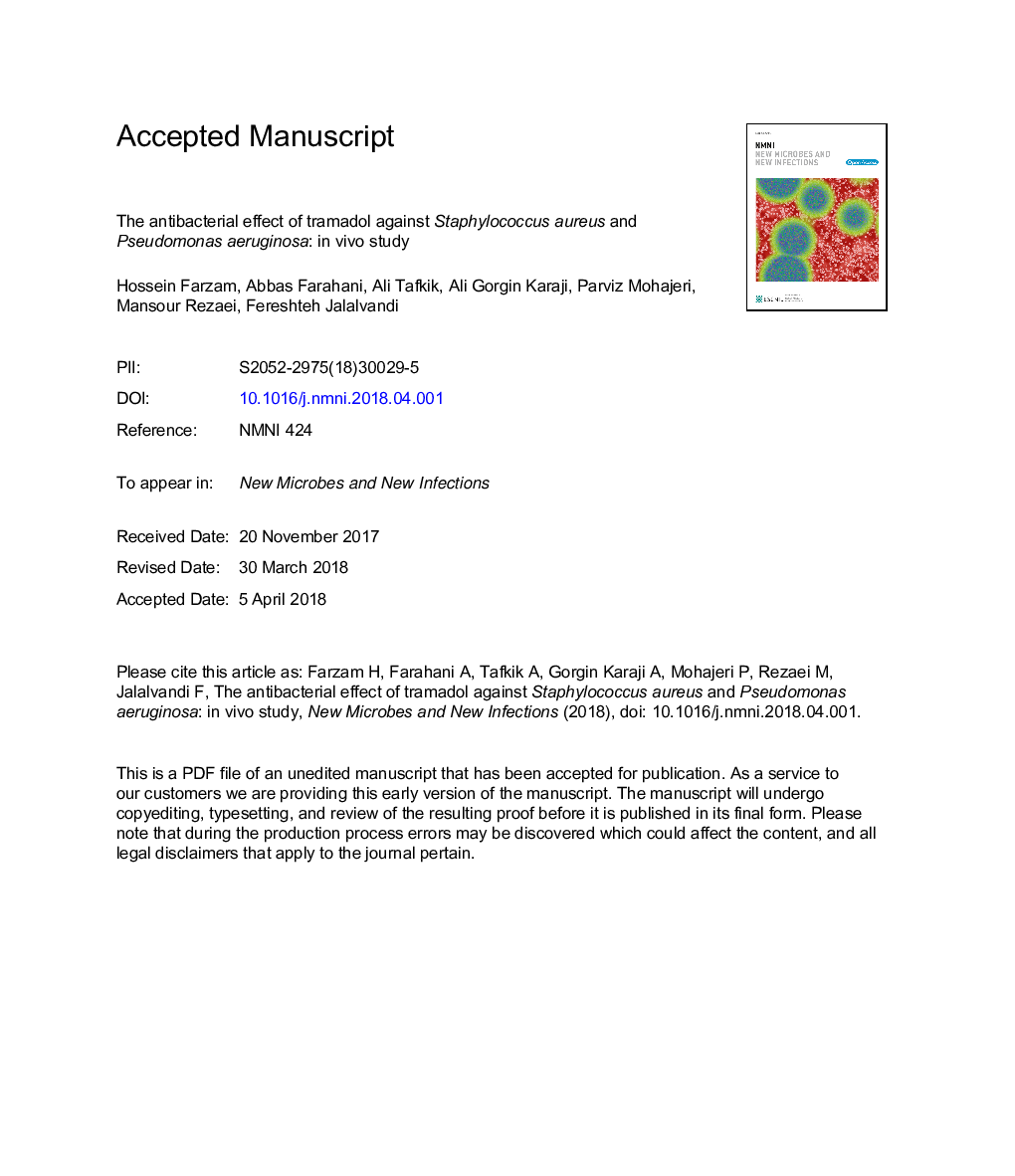| Article ID | Journal | Published Year | Pages | File Type |
|---|---|---|---|---|
| 8750093 | New Microbes and New Infections | 2018 | 12 Pages |
Abstract
Some important adverse effects of local and regional anaesthesia including injection-site infection, epidural abscess and meningitis, are usually caused by bacteria such as Staphylococcus aureus and Pseudomonas aeruginosa. These infections can even cause the patient's death in severe cases. In the present study, the antimicrobial activity of tramadol was investigated on S. aureus and P. aeruginosa in BALB/c-sensitive mice. This experimental multigroup research study evaluated the effect of two different concentrations of injectable tramadol (12.5 and 25 mg/mL) on local infections caused by S. aureus and P. aeruginosa in BALB/c mice within 24 and 48 hours. The results showed that tramadol injection in the specified doses did not have a significant impact on the diameter of lesions caused by local infections due to these organisms. However, the diameter of inflammation resulting from local infection with P. aeruginosa had statistically increased in the two doses after 48 hours (p 0.019). Subcutaneous injection of tramadol reduced the growth of S. aureus through enhancing phagocytes and tissue inflammation; however, it did not help eliminate P. aeruginosa, and at a dose of 25 mg/mL it also increased the growth and spread of the bacteria. It seems that the observed difference was due to the different characteristics of these two bacteria.
Keywords
Related Topics
Life Sciences
Immunology and Microbiology
Microbiology
Authors
H. Farzam, A. Farahani, A. Tafkik, A. Gorgin Karaji, P. Mohajeri, M. Rezaei, F. Jalalvandi,
